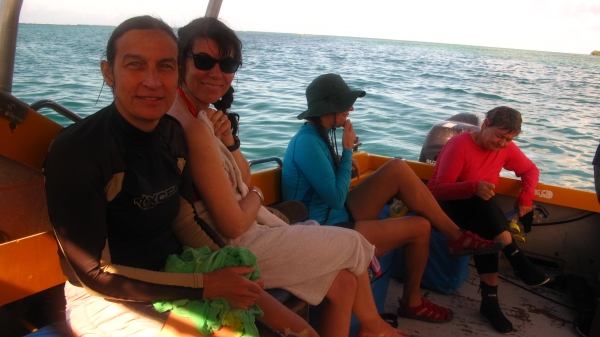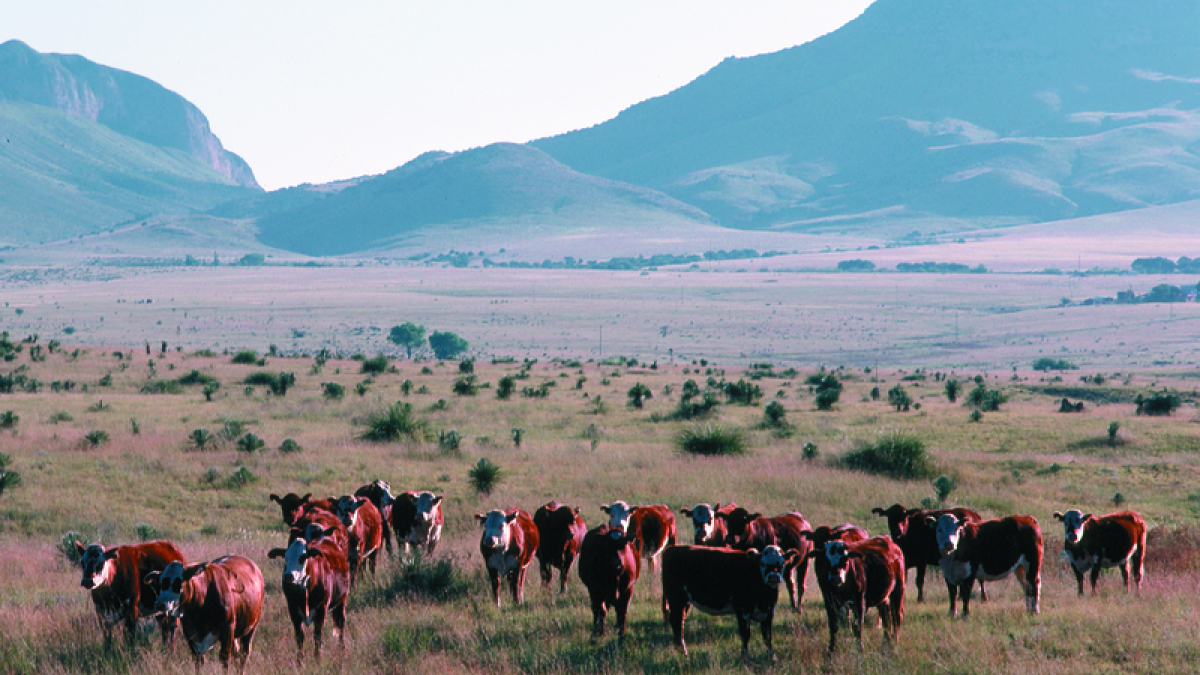Abby York grew up in Wisconsin, on land where her family has operated a dairy farm since the 1800s.
As a kid, community was synonymous with family, and this had a critical impact on her worldview. York didn’t know it at the time, but being surrounded by people who valued place, community, land and livelihood was the ideal training ground for her future career as an environmental social scientist.
“In retrospect, my entire academic career has been shaped by a preoccupation with the land and how local communities collectively manage it,” said the School of Human Evolution and Social ChangeThe School of Human Evolution and Social Change is the College of Liberal Arts and Sciences. associate professor. Whether in places like Nepal or here in Arizona, YorkAbby York is also director of the environmental social science graduate program. explores how communities and institutions have provided goods like water, agriculture and natural resources throughout history and in modern times, working with both natural and social scientists from a variety of disciplines in order to gain a broader, more informed perspective on these issues.
“Typically, when I get a chance to talk with someone who works the land, I feel at home finding common ground whether in Arizona or halfway around the world,” said York, pictured at left.
One of York’s current projects involves community forestry governance, or how local people manage the surrounding forest and its resources, in Chitwan, Nepal. Specifically, the project examines communities’ ability to deal with Mikania micrantha, an invasive plant species.
“Our work focuses on communities that are near the Chitwan National Park, which is a critical habitat for several species, including endangered animals like the one-horned rhino and the Bengal tiger,” York said. “I’m leading the effort to investigate local community forestry governance capacity to tackle this complex situation.”
Closer to home, York studies the vulnerability of Arizona’s agriculture and farmers to climate change, as well as the effects of urbanization in Arizona, which she examines alongside the Central Arizona Phoenix Long-Term Ecological Research program.
York has found both similarities and differences in Nepal and Arizona communities’ natural resource governance.
In Nepal, households are shifting from subsistence to industrial agriculture, or they are seeking opportunities away from the farm and migrating to other parts of Asia. In her study area of Chitwan, most households are still involved in farming, at least for household use.
In Arizona, the number of independent farmers who work their own land is growing smaller. Most agriculture is intensive and done through large, family-owned corporations.
The two groups share some similar concerns when it comes to wildlife governance. Jaguars are found in southern Arizona, wolves to the east, and mountain lions throughout the state, which create worry over livestock loss and human-wildlife conflict. Likewise, the tiger and rhino populations of Chitwan cause significant losses of livestock and even human life.
“In both places, there are sometimes tense conversations about what costs should be borne by individuals and households to preserve these important species and how society compensates communities that live with these risks,” York said.
There is a marked distinction, however, between the two communities’ attitude toward the land, she said.
“The cosmology of the West is quite different than that of the East, where ideas from Hinduism and Buddhism, as well as indigenous animistic religious beliefs, lead to different views of nature, animals and human responsibilities towards other living things. In the West, most families engaged in agriculture have a decidedly utilitarian view.”
Another difference between the two regions is how they are affected by climate change. In Nepal, changing weather patterns are leading to an increased risk of flooding. Many communities are near major rivers that flow from the Himalayas, and with heavier rains suffer loss of human life and major damage to infrastructure. This alters the timing of irrigation and agricultural practices in this farming region, as well as the abundance of forest resources.
Arizona is experiencing the opposite problem — an extended drought and shifting rainfall patterns. The impact on agricultural communities has been minimized by Arizona’s extensive irrigation systems and water policies, but there are predictions that within the next 20 years, this buffer will be gone due to reduced access to water from the Colorado River. Ranching communities are already seeing some negative effects of climate change in the quality of the grasslands.
“Although there is great uncertainty associated with exactly how the climate will change, agricultural communities throughout the world are typically working at the margins, whether in terms of revenues or weather,” York said. “Even small changes have big impacts.”
The most crucial ingredient to these communities’ success is one that they have in common: in both places, there are strong efforts to collectively organize the provision of public goods to rural communities.
In southern Arizona, ranchers have collaborated with environmentalists to conserve wildlife, open spaces and opportunities for ranching. In Nepal, communities have come together to gain legal access to the forest, manage its resources and petition the government for compensation due to wildlife conflict or natural disaster.
According to York, “People can self-organize under the right conditions, and in both regions there is evidence of the efficacy of these efforts to conserve the environment and natural resources.”
Written by Mikala Kass, mkass@asu.edu
More Environment and sustainability

Assessing the red alert on corals
As our planet continues to warm, rising ocean temperatures threaten coral reefs across the globe. But not all corals are created equal, and some may be able to withstand higher temperatures or longer…

Designing a more sustainable future with AI
Editor's note: This feature article is part of our “AI is everywhere ... now what?” special project exploring the potential (and potential pitfalls) of artificial intelligence in our lives. Explore…

ASU researchers incorporate data into decision-making for conservation efforts
Leah Gerber sees conservation as a crisis discipline — the work involved tends to be reactive, with the engaged decision-makers rapidly basing their guidance on the available information.“When you go…

